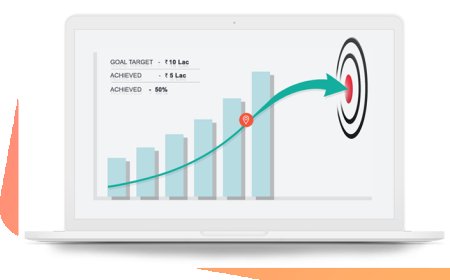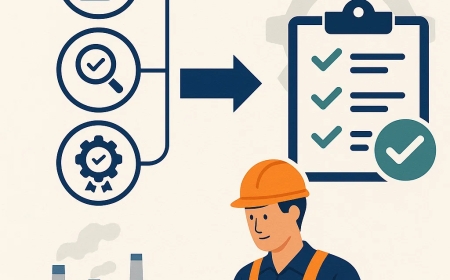How Do You Evaluate an AI Development Company’s Portfolio?
Evaluating an AI development company’s portfolio is key to selecting the right partner for your project.

With AI revolutionizing every sectorfrom healthcare and finance to retail and logisticsbusinesses are racing to adopt intelligent solutions. But success in AI doesn't just depend on cutting-edge technology; it heavily relies on selecting the right development partner. One of the most critical steps in that process is evaluating the companys portfolio.
A well-structured and transparent portfolio offers a window into an AI companys capabilities, industry experience, innovation, and ability to deliver measurable business value. But how do you interpret that portfolio? What should you be looking forand what are the red flags?
In this blog, well walk you through how to evaluate an AI development companys portfolio to ensure you're choosing a reliable, skilled, and business-aligned partner for your AI journey.
1.Look for Diversity and Relevance of Projects
A strong AI portfolio should reflect a wide range of successful projects across different industries and AI use cases. This showcases the companys adaptability and real-world application expertise.
Key things to assess:
-
Has the company worked with startups, enterprises, or both?
-
Are the use cases similar to your needs (e.g., chatbots, computer vision, predictive analytics)?
-
Do they have experience in your specific domain or industry?
Example:
If you're a healthcare startup needing NLP for clinical notes, a portfolio featuring AI in healthcare and text processing is highly relevant.
2.Analyze the Depth of Case Studies
Dont just glance at the logos or project titlesdig into the case studies. Great AI companies will provide in-depth case studies that clearly outline the problem, their solution, and the outcomes.
Elements of a strong case study:
-
Client challenge: What specific problem was solved?
-
AI solution used: What technologies and methods were applied?
-
Process: How was the project executed (phases, timelines, team involvement)?
-
Results and ROI: What were the measurable outcomes or KPIs? (e.g., Reduced processing time by 60%)
Pro Tip:
Look for before-and-after comparisons. These indicate whether the AI solution delivered real business value.
3.Check the Technologies and Tools Used
An AI development companys portfolio should reflect technical depth and familiarity with modern tools and frameworks.
Look for experience with:
-
AI/ML frameworks: TensorFlow, PyTorch, Scikit-learn, Hugging Face
-
NLP libraries: spaCy, NLTK, OpenAI APIs
-
Computer vision tools: OpenCV, YOLO, Detectron
-
Data engineering: Apache Spark, Airflow, Databricks
-
Cloud platforms: AWS, Azure, Google Cloud
-
MLOps tools: MLflow, Kubeflow, DVC
The more diverse and updated their tech stack, the better they can tailor solutions to your projects needs.
4.Evaluate the Level of Customization
Beware of cookie-cutter solutions. The best AI development companies dont just apply generic modelsthey build custom solutions aligned with client goals and datasets.
Assess:
-
Do their case studies showcase tailored models trained on client-specific data?
-
Is there mention of personalization, optimization, or domain-specific adjustments?
-
Are solutions integrated with business processes and legacy systems?
Customization is a hallmark of a capable and business-focused AI partner.
5.Look for Business Impact, Not Just Technical Success
Many companies boast about using advanced algorithms, but what truly matters is whether those projects delivered real, measurable business outcomes.
What to look for:
-
Clear KPIs such as increased sales, reduced churn, improved accuracy, or time savings
-
Client testimonials emphasizing business value
-
Tangible ROI metrics mentioned in their results
If the portfolio only highlights technical accomplishments without showing how they improved business performance, it might be a red flag.
6.Client Testimonials and References
Client feedback adds another layer of authenticity and credibility to the portfolio.
Strong indicators include:
-
Direct quotes or video testimonials from clients
-
References from well-known or respected brands
-
Repeated clients (suggesting satisfaction and trust)
Bonus Tip:
Reach out to a past client if possible, especially if theyre in your industry. They can share insights into working with the companybeyond whats on paper.
7.Look for Evidence of Scalability and Long-Term Thinking
AI is not a one-off projectit evolves with your business. Ensure the companys portfolio shows examples of scalable and sustainable solutions.
Things to check:
-
Use of cloud-native architecture for easy scaling
-
Implementation of MLOps for monitoring, retraining, and deploying models
-
Ability to support real-time data or high user traffic
Scalable AI ensures youre not building something that breaks as you grow.
8.Assess the Companys Innovation and Thought Leadership
Great AI development companies stay ahead of the curve. They often experiment with emerging technologies and contribute to the AI community.
Portfolio indicators of innovation:
-
Integration of Generative AI, LLMs, or edge AI
-
Development of proprietary AI tools or platforms
-
Open-source contributions or academic collaborations
-
Blog posts, whitepapers, or conference presentations linked to their projects
This shows that the company is not just executingbut innovating.
9.User Experience and Integration with Products
AI only delivers value when its usable. Check if the company integrates AI into real products with thoughtful UX and seamless backend connections.
Strong portfolios include:
-
AI integrated into mobile apps, dashboards, or platforms
-
Easy-to-use interfaces powered by AI
-
Examples of API or SDK development for integration
This ensures that the AI works within your ecosystem and enhances the user journey.
10.Look for Ethical Considerations and Compliance
In todays regulatory climate, its essential that AI development companies address issues like fairness, bias, and compliance.
Check whether they:
-
Mention fairness, transparency, or explainability in AI systems
-
Comply with industry regulations (GDPR, HIPAA, etc.)
-
Use practices for bias detection and model accountability
Ethical AI isnt just responsibleits smart business.
Conclusion
An AI development companys portfolio is more than a gallery of past projectsits a direct reflection of their competence, innovation, and ability to deliver real value. Evaluating that portfolio with a sharp eye ensures you choose a partner who can meet your technical needs and drive measurable business outcomes.
To summarize, when reviewing an AI portfolio, assess:
? Relevance and diversity of use cases
? Depth and clarity of case studies
? Use of cutting-edge technologies
? Business results and measurable ROI
? Client testimonials and long-term relationships
? Scalability, ethics, and integration capabilities
The right portfolio will give you the confidence that your project is in capable, experienced, and forward-thinking hands.




































